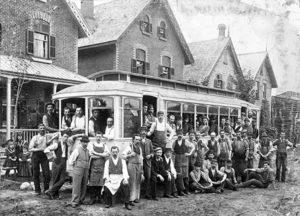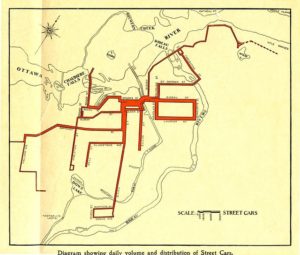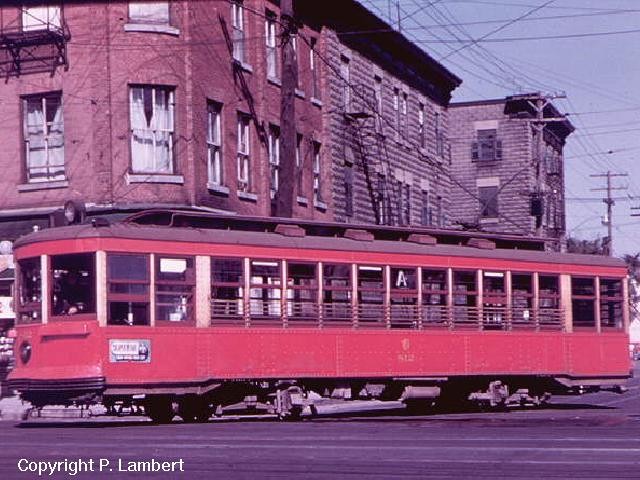The original O-Train: Streetcars in Sandy Hill
Samuel Close

All the talk of light rail expansion and transit masterplans for the city may lead you to wonder about the history of transportation in your own neighbourhood. I certainly did, and it led me to a local history richer than you might expect, which I want to share with you today.
Ottawa grew rapidly during the industrial revolution when it was chosen as the capital of the new country, with many politicians and government employees choosing to settle just east of the canal in the relatively new community of Sandy Hill. They were drawn by the large amount of space and greenery compared to some older areas of the city, which were then considered overcrowded. Despite the distance, commuting options back then were limited to either walking or horse drawn carriage. It was not until the construction of several public hydroelectric works on the Ottawa River that another option arose.
The first electric streetcars in the capital began operation in 1891 and were run by the Ottawa Electric Railway company until 1948, when all public transit services were amalgamated by the City as the Ottawa Transportation Commission, the predecessor to OC Transpo today. They quickly exploded in popularity and were seen as the modern way of getting around. By the turn of the 20th Century, the city had embraced the streetcar – or “tram” as they were affectionately called – and Sandy Hill was no exception. Service ran every few minutes at peak times during the day and later at night, and even controversially for the time, on Sundays. The Bank-Rideau line was one of the most popular by ridership and contributed heavily to the economic growth of the neighbourhood. These streetcars were used by people from all walks of life as a common means of transportation: a ride was available for pocket change to office workers, day trippers, and students alike.

Tracks ran both directions in a loop across the old Sappers and Dufferin Bridges (today the Plaza Bridge between the Senate and Chateau Laurier); past the businesses of Rideau and the apartments of Charlotte Street to Laurier and the College of Ottawa; and finally back up Nicholas Street, along the canal before the construction of Colonel By Drive there. This formed a neat rectangle in the north of the neighbourhood, where much of the old core of Sandy Hill with many of its historic homes and storefronts still exist today. In the winter, trains were equipped with snowploughs, and pickaxes and shovels were often required to clear thick ice that formed on the tracks. The trams were equipped with electric heating however, a luxury at the time.
The last of the tracks and electrical poles were removed in 1959 after a goodbye-parade. The existing routes were partially phased out or converted into bus lines which followed similar routes to those still in service now. Rail transit would not return to the neighbourhood until 2019 with the opening of the O-Train Confederation line, signalling a worldwide trend towards more renewable methods of transportation not all that different from the ones you could see here just a few decades ago.

